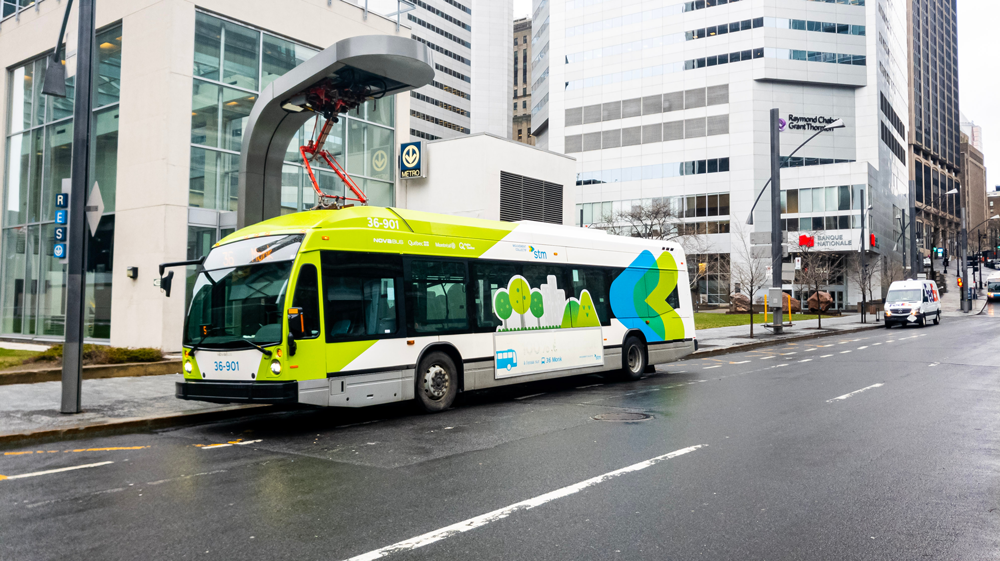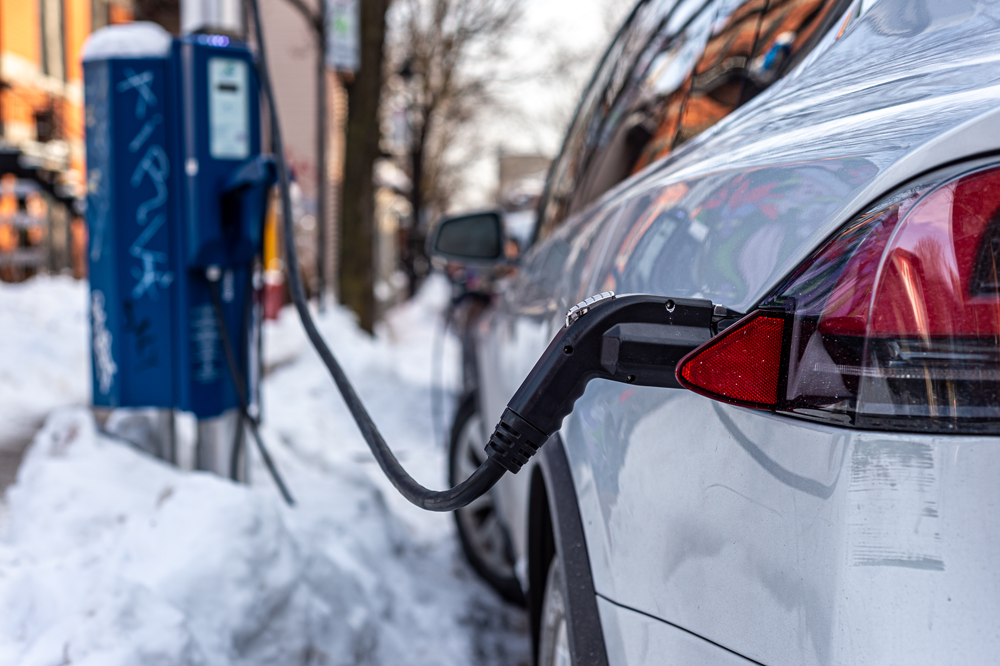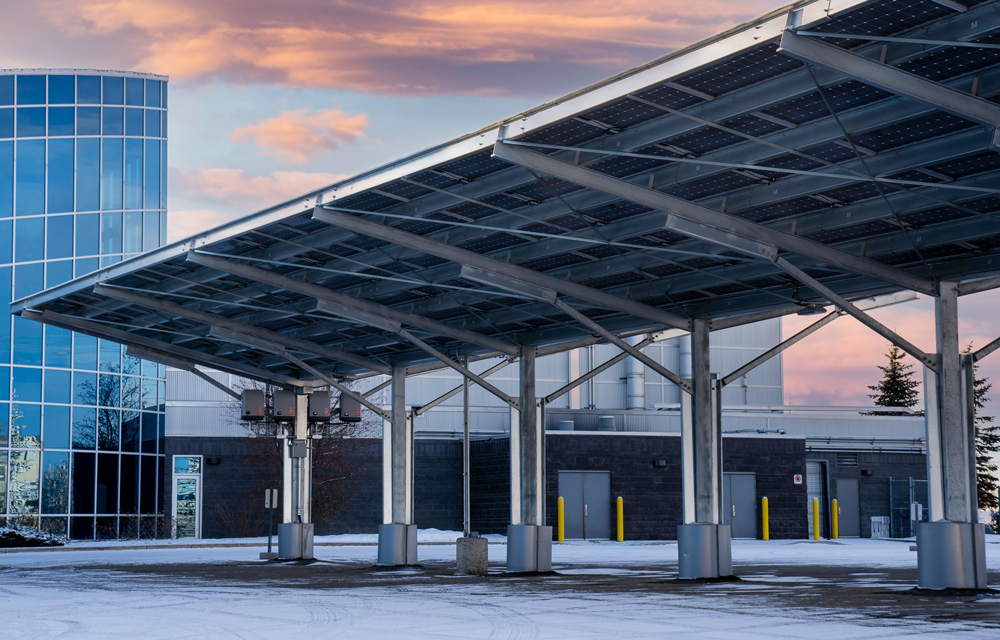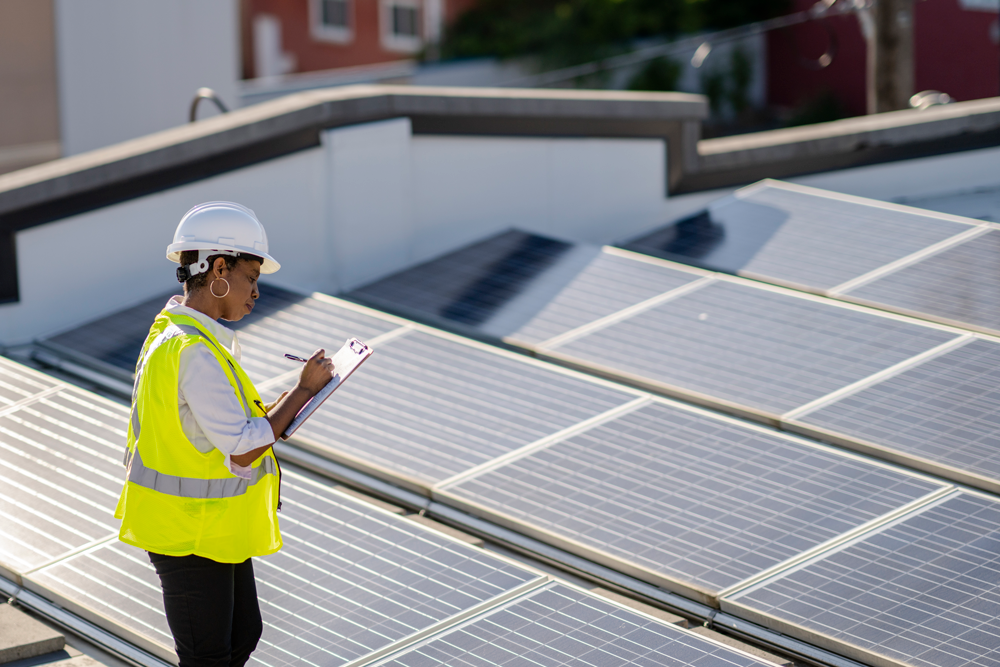Building The Canada We Want In 2050
Building The Canada We Want In 2050

Building the Canada
We Want in 2050:
Engagement Paper on the
National Infrastructure
Assessment
(PDF Version) (5.16 MB)
Table of Contents
- Minister's Foreword
- Introduction to the National Infrastructure Assessment
- Progress under the Investing in Canada Plan
- Context for change: COVID-19 and net-zero emissions by 2050
- Priorities for the National Infrastructure Assessment
- Assess Canada's infrastructure needs and establish a long-term vision
- Improve coordination among infrastructure owners and funders
- Determine the best ways to fund and finance infrastructure
- How to Participate and Next Steps
Minister's Foreword
In Canada, we think big. That's because we are big. To survive and thrive in the upper half of North America, we have always had to build. That was true when we built the railway across the continent. That was true when we built the Trans-Canada Highway and the St. Lawrence Seaway. We found ways to build our nation by connecting Canadians to each other, to other countries and to markets.
In the 21st century, the concept of "nation-building infrastructure" is taking on new meaning. It's not just about railways, bridges and ports. It's public transit, cycling paths and electric vehicles that help us get around in faster, cleaner and affordable ways. It's high-speed broadband and digital infrastructure that allow us to connect with one another. It's nature that provides resilience against extreme weather and climate change. It's clean energy to power our homes and our businesses. It's clean water, waste management including the recycling of plastics. And it's affordable housing, childcare, and community, cultural and recreation centres that build more inclusive and livable communities.
Since 2016, the Government of Canada, has made historic investments in infrastructure, committing more than $180 billion in federal funding over 12 years, including in partnership with First Nations, Inuit, and the Métis Nation to address the infrastructure gap in their communities. With provincial and municipal contributions, and a reinvigorated Canada Infrastructure Bank, hundreds of billions of dollars are being invested into projects across Canada. Every taxpayer dollar is doing triple duty: creating good jobs and growing the economy, tackling climate change, and ensuring a better quality of life for all.
But the world has changed drastically since 2016. It is clear that COVID-19 has exacerbated existing social and economic inequities, disproportionately impacting women, Black and other racialized communities, Indigenous Peoples, and people with disabilities. That is why when we build back better, it is even more important to address these inequities by investing in key areas including childcare, affordable housing, public transit and high-speed broadband.
And while we will get out of the pandemic, the climate crisis has made it clear that we need to redouble our efforts and transition as quickly as possible to net-zero emissions. This is a trillion dollar economic opportunity, including for Canadian clean energy, Canadian businesses with clean technologies, and partnerships on Indigenous-led solutions. Support for affected workers and communities will be required to ensure an equitable transition. Further, Canada is in a competitive global race at a time of a rapidly changing climate, digital transformation, changing demographics, and shifting geopolitics. Countries with next-generation infrastructure will be outsized winners at this critical movement of transformative change. Long-term and well-coordinated investments in infrastructure are critically important. With government resources already stretched, we must invest public dollars wisely while working with the Canada Infrastructure Bank and leveraging private sector investment to accelerate the transition to net zero and to invest at the scale needed to build the country we want.
But we will not achieve our infrastructure ambition by accident. Working with Canadians, using the best available data and guided by global best practices in infrastructure planning, investment, design, and management, we can chart a forward-looking roadmap out to 2050 to guide new infrastructure investment in Canada including nation-building projects.
That's why we are launching engagement to help shape Canada's first National Infrastructure Assessment. The Assessment will be key to fostering Canada's long-term growth and competitiveness, driving to net-zero emissions and increasing the resiliency of our infrastructure to a changing climate, and to improving quality of life for all Canadians.
It's time to think big again and build the Canada we want in 2050. I look forward to hearing from you.
Introduction to the National Infrastructure Assessment
Infrastructure is central to the daily life of every Canadian – from public transit to trading ports, broadband networks to energy systems, community services to natural spaces. Infrastructure is what keeps our economy moving and communities thriving, and will play a massive role in our country's ability to exceed our 2030 climate targets and achieve net-zero emissions by 2050.
The Government of Canada's infrastructure investments are focused on achieving three core objectives: promoting economic growth, job creation and competitiveness; tackling climate change and increasing resilience; and improving social inclusion and quality of life for all Canadians.

Recently, the Government committed to conduct a National Infrastructure Assessment to identify the needs and priorities for our country's infrastructure, and plan for a net-zero emissions future by 2050. This work will build on the Government's 12-year Investing in Canada Plan. Evidence-based and long-term infrastructure planning are global best practices recommended by the International Monetary Fund and Organisation for Economic Co-operation and Development, and have already been undertaken by countries such as the United Kingdom and Australia.
Canada is at a critical juncture. Our ambition to build 21st century infrastructure must be matched with stronger infrastructure planning practices and priority-setting. Our vision is that the National Infrastructure Assessment will provide independent advice based on data, varied expertise and engagement, on how infrastructure investments can best achieve our core objectives by focusing on three priorities:
- Assessing infrastructure needs and establishing a long-term vision;
- Improving coordination among infrastructure owners and funders; and
- Determining the best ways to fund and finance infrastructure.
With this Engagement Paper, the Government of Canada is launching engagement on the National Infrastructure Assessment, and seeks feedback on the Assessment's three priorities and how to achieve them. Please refer to the end of this paper for information on how to participate in the engagement process, which will continue until June 30, 2021, and information on next steps. Whether the focus is on near and medium-term priorities or establishing long-term vision, we want to hear your views on building the Canada we want in 2050.
Progress under the Investing in Canada Plan
In 2016, the Government of Canada launched the 12-year Investing in Canada Plan and committed more than $180 billion in federal funding to infrastructure programs across five priority areas: public transit, green infrastructure, social infrastructure, trade and transport and rural and northern communities. With provincial, territorial and municipal contributions under the plan, hundreds of billions of dollars more has and will continue to be invested in infrastructure projects across Canada.

Now, five years into this 12-year plan, the Government of Canada has invested over $71 billion and approved tens of thousands of projects.Under the plan's flagship $33-billion Investing in Canada Infrastructure Program alone, delivered through bilateral agreements with provinces and territories, more than $12 billion has been invested in over 2,800 approved projects. The Canada Infrastructure Bank, which is allocated $35 billion to finance infrastructure projects, is moving forward on investments in the priority areas of public transit, broadband, green infrastructure, trade and transportation and clean power, as well as to reach its minimum target of $1 billion for projects in partnership with and that benefit Indigenous Peoples. Under the Investing in Canada Plan, $4.29 billion has been invested through Indigenous Services Canada for over 13,000 approved projects benefiting Indigenous Peoples.
Context for change: COVID-19 and net-zero emissions by 2050
Since the Investing in Canada Plan was set in motion, the COVID-19 pandemic shocked the world, exposed existing societal vulnerabilities and investment gaps, and presented dramatic new challenges. Indigenous Peoples, Black and other racialized communities, youth, women, seniors, recent immigrants and persons with disabilities who already faced barriers have been particularly affected by the pandemic and are at risk of being left behind. Infrastructure investments, such as high-speed broadband, childcare and affordable housing, are sorely needed to help address these inequalities.
Since the start of the pandemic, the Government has adapted existing and introduced new programs related to infrastructure to meet the extraordinary challenges of COVID-19, including:
- Accelerating the approval of projects under the Investing in Canada Infrastructure Program, over 2,300 projects approved since March 31, 2020. Under this program, the Government has also expanded the flexibilities and created a temporary COVID-19 Resilience stream, worth up to $3.3 billion, allowing for much needed projects, such as improved ventilation in buildings, parks and cycling paths, and upgrades to hospitals and long-term care homes.
- Establishing the Universal Broadband Fund providing $1.75 billion to support high-speed Internet expansion.
- Deploying the Rapid Housing Initiative providing $1 billion to help address urgent housing needs of vulnerable Canadians.
- Making an investment of more than $19 billion through the Safe Restart Agreement available to support provinces and territories, including with municipal and public transit operating costs.
- Helping First Nations adapt their on-reserve community infrastructure and implement public health and safety measures providing $59 million through the Infrastructure Adaptation Fund.
- Accelerating payments in 2020-2021 of $2.2 billion to municipalities and First Nations through the federal Gas Tax Fund.
- Launching the Canada Healthy Communities Initiative to provide $31 million in investments to transform public spaces in response to COVID-19.

At the same time, the world recognizes that we are in a climate crisis, and many countries including Canada have committed to achieving net-zero emissions by 2050. Climate change remains one of the greatest challenges of our time—decarbonizing our infrastructure has to be an underlying principle in all future infrastructure investments. We also need to guard our existing and new infrastructure against extreme weather that we are already experiencing in Canada. Investing in low and zero-carbon, sustainable and resilient infrastructure can save us billions in future costs and presents a huge economic opportunity, including for Canadian businesses.
The Government's Strengthened Climate Plan has already begun making the significant infrastructure investments needed to meet our climate action ambitions, including:
- Announcing $14.9 billion in new funding for public transit over 8 years, including for major transit projects, zero-emission buses and electrification, rural transit solutions, active transportation and permanent public transit funding of $3 billion annually starting in 2026.
- Launching Canada's plan to plant two billion trees over the next 10 years, with an investment of $3.16 billion for the Growing Canada's Forests Program.
- Launching the Greener Homes Initiative for homeowners to invest in their home, making it more comfortable to live in, improving resiliency and reducing energy bills.
- Developing a Hydrogen Strategy for Canada, which is an ambitious framework that seeks to position Canada as a global hydrogen leader, cementing this low-carbon and zero-emission fuel technology as a key part of our path to net-zero carbon emissions by 2050.

Following bilateral talks between President Biden and Prime Minister Trudeau, the Government of Canada recently agreed to a Roadmap for a Renewed U.S.-Canada Partnership, that includes the countries' shared vision for a sustainable and inclusive economic recovery and accelerated ambition to address the climate crisis and protect nature. This joint statement recognizes the role of infrastructure in both countries energy systems, trade and transportation networks, and border and security systems.
In this new context, the Government of Canada is moving forward to build a more prosperous, inclusive and resilient Canada. In the immediate term, our efforts are focused on restarting the economy and creating over one million jobs, restoring employment to previous levels. By supporting local businesses and creating job opportunities, investing in infrastructure is a key component of reaching this commitment.
Priorities for the National Infrastructure Assessment
Canada's infrastructure must overcome major challenges if it is to meet the needs of future generations. Varied engagement and expert analysis will inform the Assessment as it will seekto focus on the three priorities outlined below.
1. Assess Canada's infrastructure needs and establish a long-term vision
The National Infrastructure Assessment will allow for a comprehensive, evidence-based and expert-driven assessment of our country's infrastructure near and medium-term needs, and establish a long-term vision for public and private infrastructure investments. This work is critical to more quickly and cost-effectively delivering infrastructure projects for Canadians, and will focus on our country's infrastructure needs across the following categories:
Powering our economy for clean energy systems and net-zero structures – The Assessment will consider the infrastructure needed to support the transition a net-zero economy, from the sources of clean and renewable energy through the entire energy system and its end-use. These systems will require infrastructure such as energy grids and storage, district and ground-source heating, clean and alternative fuels, other ways of promoting electrification. Infrastructure is critical to the development and use of clean technologies and innovative decarbonization solutions, such as hydrogen fuel cells, biofuels, long-life batteries, and carbon removal, capture and storage. The Assessment will also look at opportunities to promote for retrofits and net-zero new builds, low and zero-carbon building materials, industrial decarbonization, reducing emissions in manufacturing, and efficiencies in waste management.

The Government has committed to phase out coal power and achieve 90% non-emitting electricity by 2030, as well as reduce the dependency on diesel in remote and Indigenous communities. Working with provinces and territories, the Government has also committed to develop a model building code to enable net-zero energy ready buildings, and to improve waste systems by ensuring more plastics are recycled.
Getting people and goods around faster, cheaper and cleaner – The Assessment will consider how infrastructure investments can improve access to affordable, clean, safe and efficient transportation options, including zero-emission vehicles and charging or fueling stations, public transit and active transportation. Additionally, the Assessment will make the connections between the infrastructure we need and our strategic trade corridors, including the use of roads, bridges, rail, airports and seaports.

The Government has already made historic investments in public transit projects and recently established a permanent public transit fund. It is also committed to support the purchase of 5,000 buses over 5 years, and achieve 100% zero-emission vehicle sales by 2040.
Staying connected in a digital society - The Assessment will consider the full spectrum of digital infrastructure, including how underserved, rural and remote communities can gain access to affordable, high-speed internet, as well as advise on how next generation digital technologies can be used to meet our country's connectivity and infrastructure needs.

The Government has committed to help connect 98% of Canadians to high-speed internet by 2026 and achieve the national target of 100% connectivity by 2030.
Improving social spaces and services – The Assessment will consider how public buildings, local service facilities and other public spaces can better bring communities together, reduce barriers, promote well-being and offer important services. Public infrastructure investments can support spaces for community, culture and recreation, affordable housing, long-term care and other critical social services. For example, investments in safe, accessible and affordable child care can allow parents to fully participate in the labour market, ensure families have support, create jobs in the social sector, and strengthen the early education benefits available to young Canadians. Given that infrastructure investments are often not evenly felt by Indigenous Peoples, Black, and other racialized communities, youth, women, seniors, recent immigrants and persons with disabilities, economically disadvantaged persons, and other marginalized groups, this Assessment is more important than ever.

The Government has committed to improve access to affordable housing, eliminate chronic homelessness, and implement a strategy for rural economic development. Indigenous Peoples face unique and significant infrastructure needs, and the Government has made commitments to close the infrastructure gap in Indigenous communities.
Investing in our natural environment – The Assessment will consider how natural disasters such as floods, fires, erosion and extreme heat impact infrastructure, and how to mitigate or prevent impacts of future climate risks through infrastructure. Increasingly, we are also understanding the value of nature: from forests and wetlands as carbon sinks; to natural infrastructure to mitigate natural disasters; to the benefit of parks and natural spaces bring for peoples' health and well-being. Farmers know that efficient and effective agricultural irrigation infrastructure is critical to the long-term sustainability of their environment and business. As a core community service, water and waste management infrastructure is inextricably linked to our natural environment and must be supported for communities to thrive.

The Government has committed to protect 25 percent of Canada's lands and waters by 2025, and 30 percent by 2030, and to use nature-based solutions to fight climate change, including by planting two billion trees. Additionally, the Government has committed to improve resiliency to climate change's impacts, as well as to invest in parks and pathways so that Canadians have expanded access to green space.
By better understanding our country's infrastructure needs, multiple actors in the infrastructure sector will be able to work together in establishing a long-term vision for where and how we focus both public and private sector investment.
2. Improve coordination among infrastructure owners and funders
The National Infrastructure Assessment will examine and provide advice on how to improve coordination, collaboration and alignment among public and private sector infrastructure owners and funders, and in doing so will respect jurisdictional boundaries within Canada's federation and the self-determination of Indigenous Peoples.

In Canada, publicly-owned infrastructure is primarily owned by municipal governments (61.9%), followed by provincial and territorial governments (32.6%), with only a small portion owned by the federal government (2.8%) and Indigenous communities (2.7%). The private sector plays an important role in the ownership of certain infrastructure assets, such as broadband, telecommunications, energy distribution, trade corridors, as well as in the construction and delivery of infrastructure projects. The non-profit sector can also be a key infrastructure investor and decision-maker, particularly when it comes to community services and specialized services for specific and disadvantaged groups. While the federal government owns a small percentage of the country's infrastructure, it plays a large role in funding, regulating and setting policies and standards for projects undertaken by other infrastructure owners in Canada.
The Assessment will promote coordination among infrastructure owners and investors, including by providing advice in the following areas:
- Government rules and programs: Given multiple orders of government and decision-makers are involved in infrastructure planning, funding and delivery, a coordinated and more streamlined approach to government regulations, standards, codes, and program parameters would enable investment and speed execution of infrastructure projects.
- Workforce and skills training: Over the next 30 years, our country's growing population will mean a continuous demand for infrastructure. As we prepare for this influx of employment opportunities and seek to make our workforce more inclusive and diverse, Canada's workforce will need to keep pace with changing technologies, materials and entire infrastructure systems. Education, skills training and career development that ensures an equitable transition for affected workers and communities must be closely linked to our country's infrastructure strategy.
- Quality, architecture and barrier-free design: High quality, well-designed infrastructure maximizes the benefits of each asset constructed by improving its usefulness, visual appeal and extending its life. Ensuring optimal quality and design must also include accessibility. Barrier-free design is about more than ramps and elevators, it requires a universal design approach that, when done well, creates a seamless experience of access and inclusion for everyone. The Government will continue to make creating an accessible built environment a priority will ensure that the Assessment's work is informed by the highest standards for accessibility. As we plan and build infrastructure, also supporting new and innovative building practices and materials, such as low-carbon concrete and aluminum or cross-laminated timber, can help achieve our economic and climate objectives.
- Data and technology: The combination of data collection and new digital tools will revolutionize infrastructure policy, planning and building over the coming decades. Digital tools can help improve how infrastructure policy and projects interact with the public, including through better transparency, reporting and opportunities for engagement. New technologies, such as artificial intelligence, autonomous systems and machine learning, are changing how infrastructure functions and will continue to influence infrastructure demand over the coming decades. The Assessment's work in these areas will allow infrastructure owners and funders to take advantage of the data and technologies available, and to ‘future-proof' our infrastructure for generations to come.
3. Determine the best ways to fund and finance infrastructure
The National Infrastructure Assessment will support a better understanding of the gap between our infrastructure's current state and our future needs, and will explore opportunities to improve public and private sector funding, financing and innovative ways to pay for the infrastructure we need. To date, experts have struggled to quantify or scope the infrastructure deficit without a national needs assessment. Estimates of the shortfall range in the tens to hundreds of billions of dollars annually, and in the trillions to meet our needs over the next 30 years.
The Canada Infrastructure Bank was established to provide advice and invest in infrastructure projects, including by using innovative financial tools, and seek to attract capital from private sector and institutional investors.
The Government of Canada's Expert Panel on Sustainable Finance, Advisory Council on Economic Growth, and Industry Strategy Council all acknowledge the need for long-term infrastructure planning coupled with innovative ways of financing the infrastructure we need to reach our core objectives. Infrastructure investors, particularly public pension funds, have expressed a clear desire to invest in Canadian infrastructure, but institutional investment depends on governments providing certainty and predictability with a long-term vision. 
The National Infrastructure Assessment will provide a stable planning environment to inspire the private sector to invest with confidence. Given constraints on public finances and the drive to make public dollars have maximum impact, all infrastructure owners and funders will benefit from a shared and improved view on the state of Canada's current infrastructure stock and the future infrastructure needs.
How to Participate & Next Steps
The Government of Canada looks forward to receiving your feedback prior to June 30, 2021 on the three priorities for the National Infrastructure Assessment and how to achieve them, as outlined in this Engagement Paper.
As part of the engagement process, the Government of Canada will engage directly with provinces and territories, particularly in areas of their jurisdiction. First Nations, Inuit and the Métis Nation will be engaged on a distinctions-basis to seek their views on the Assessment's priorities, and will align with consultations on the Government's commitment to close the infrastructure gap in Indigenous communities before 2030. Mayors and municipal leaders will also be engaged, including in partnership with the Federation of Canadian Municipalities.

Feedback is also welcome from experts, industry leaders, investors and pension funds, academics, construction companies, unions, other private and non-profit sector organizations and civil society, to inform the Assessment's priorities and the next steps for carrying out the assessment. More information on opportunities for public engagement will occur will be available in the coming weeks.
We encourage those interested in participating and providing feedback to make a written submission of no more than 10 pages to Infrastructure Canada by June 30, 2021 using the contact information below.
Submit your feedback to Infrastructure Canada by email to: infc.info.infc@canada.ca
Or by standard mail to:
Infrastructure Canada
Communications
180 Kent Street
Suite 1100
Ottawa, Ontario K1P 0B6
You can reach us at:
Telephone Infrastructure Canada: 613-948-1148
Toll Free Number: 1-877-250-7154
TTY: 1-800-465-7735
Following the engagement process ending on June 30, 2021, the Government will consider the next steps for the National Infrastructure Assessment, including considering the Assessment priorities, establishing an independent advisory body, setting out the processes for obtaining expert advice, ongoing public engagement and producing interim studies and reports to inform infrastructure policy and investment.
We look forward to working with you to build the Canada we want in 2050.
Report a problem on this page
- Date modified: